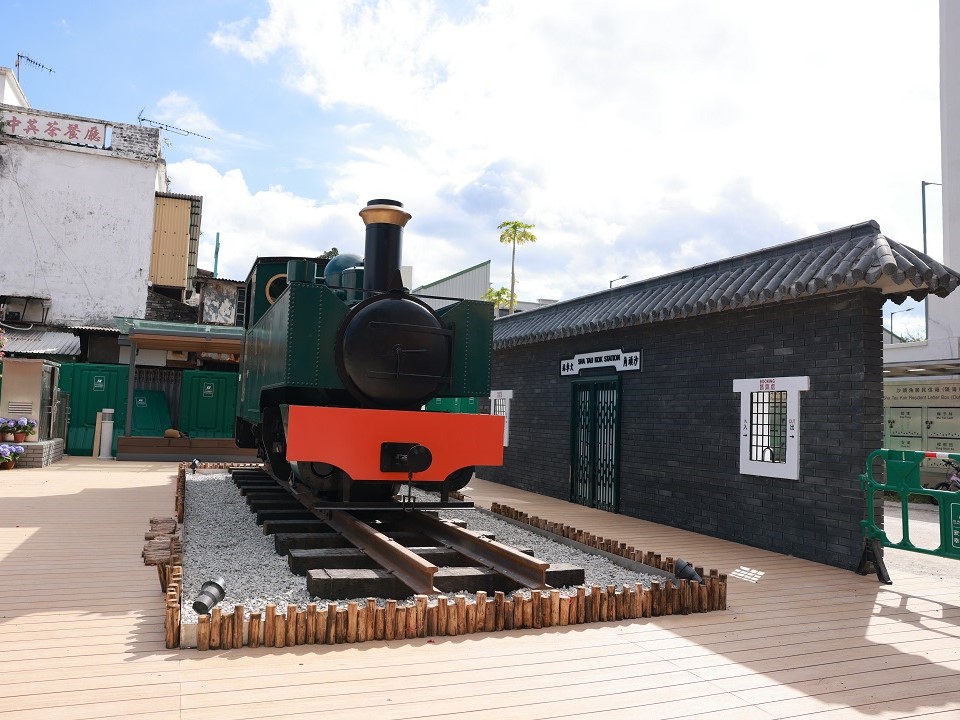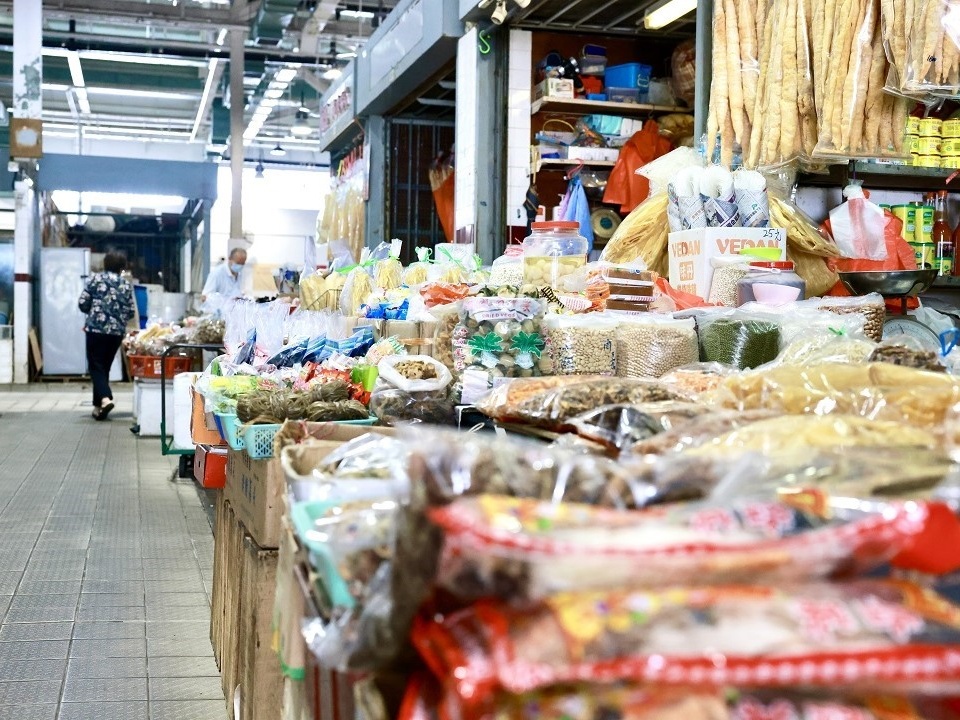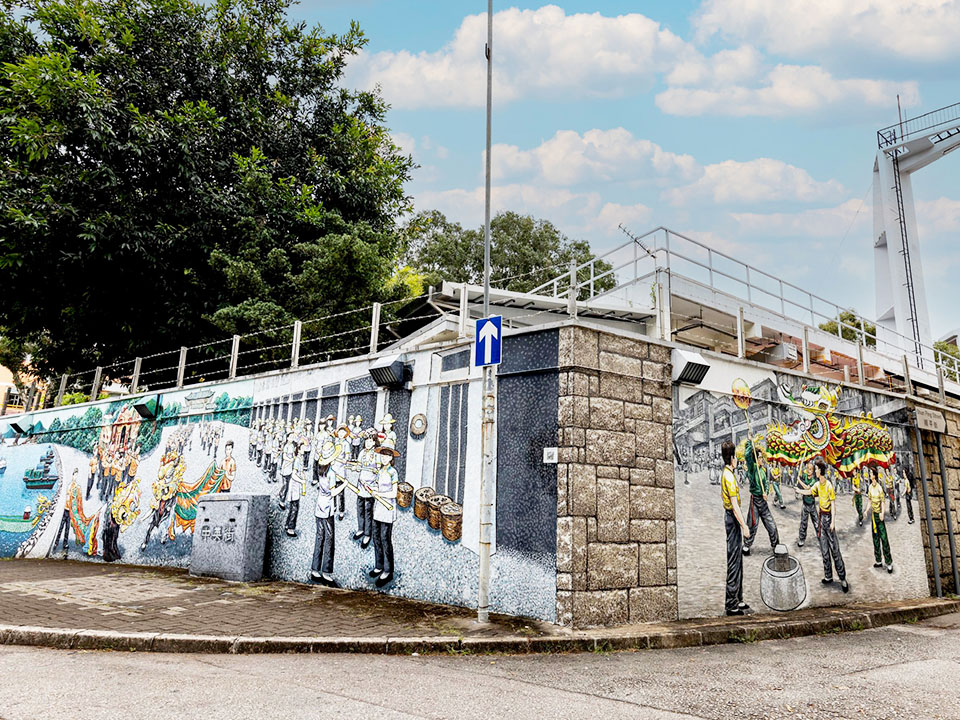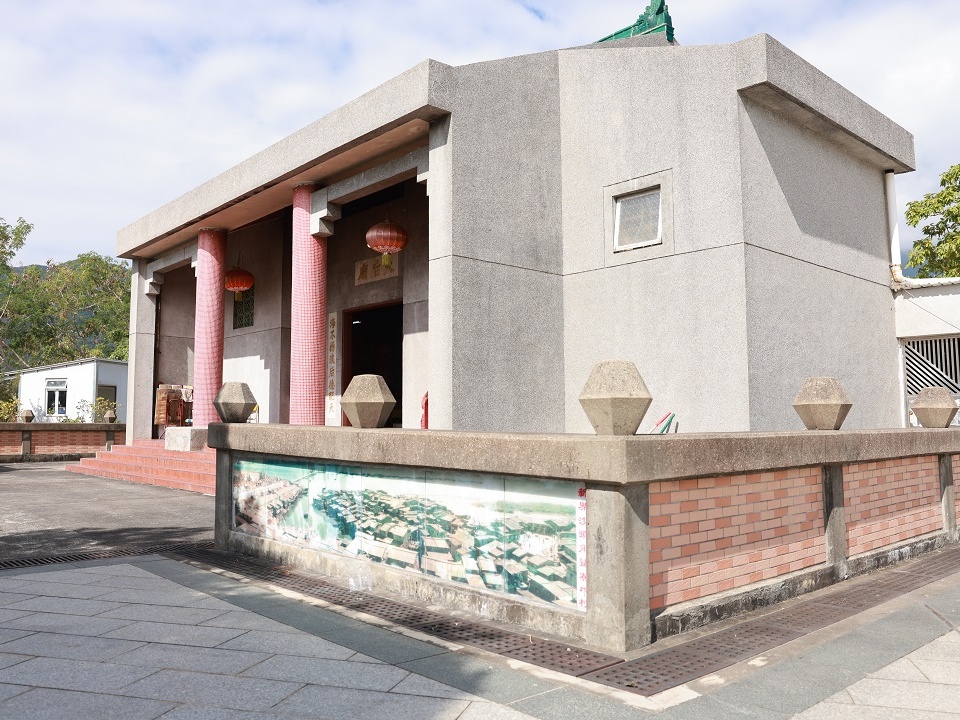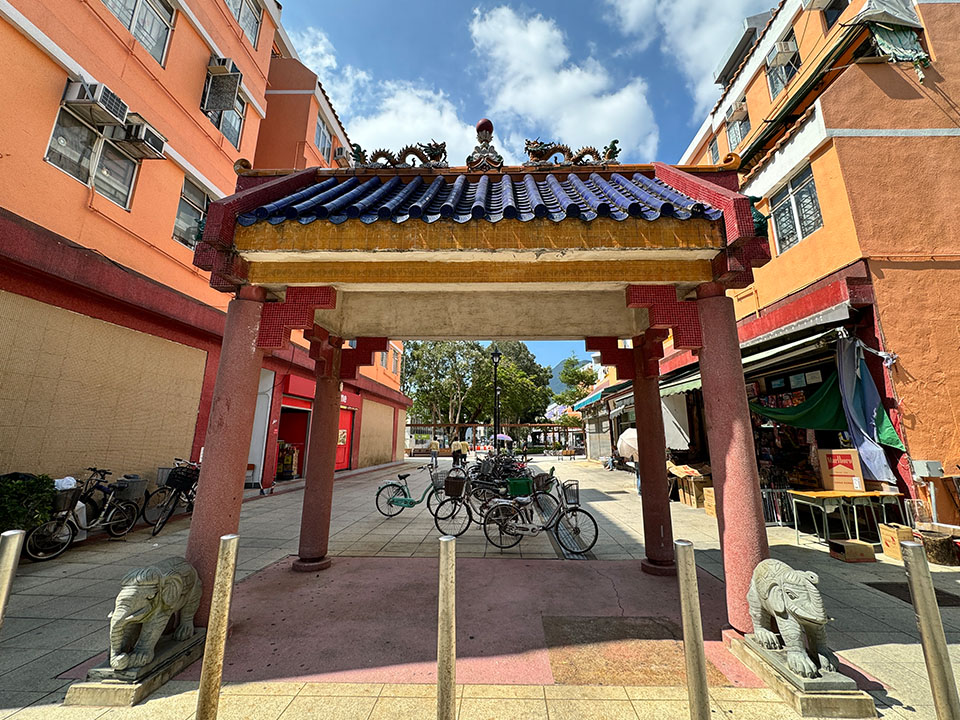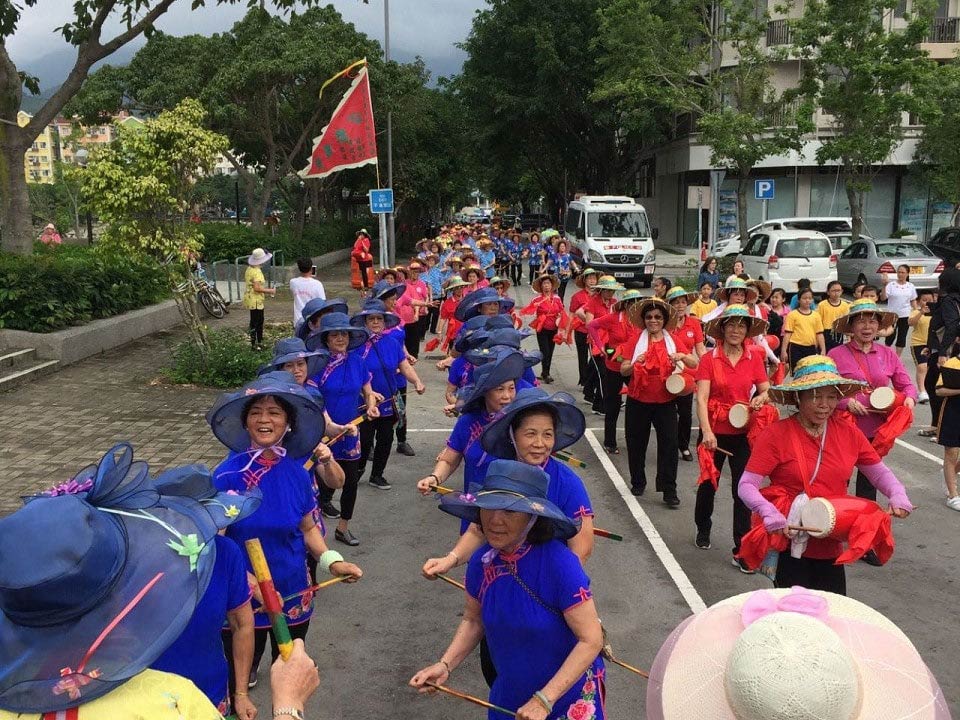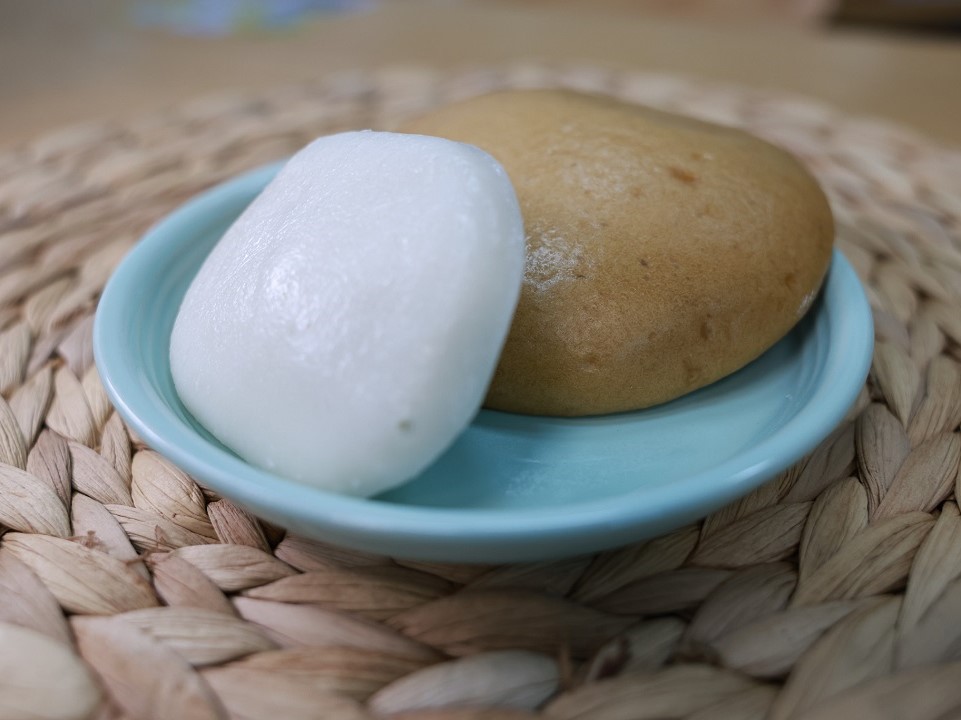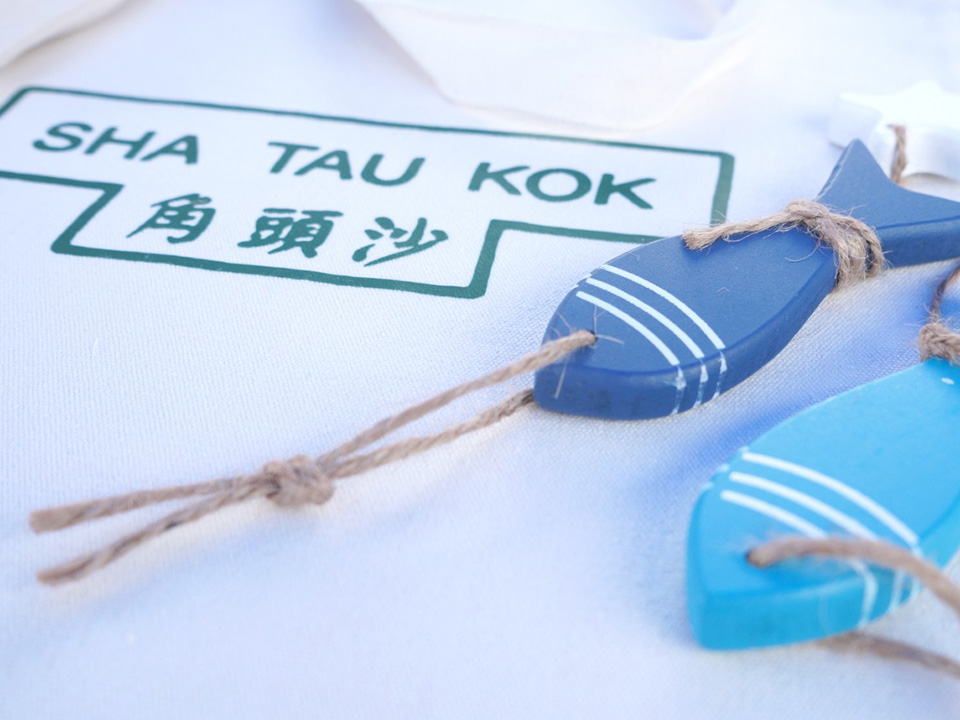All Images courtesy of the Security Bureau
About Sha Tau Kok
Located in Hong Kong’s North District and right next to Shenzhen’s Yantian District, Sha Tau Kok was designated as part of the Frontier Closed Area in 1951. As it begins to open gradually, Sha Tau Kok has become a great choice for weekend getaways. Discover the top attractions, delicacies and cultural experiences that you shouldn’t miss when visiting this border town.
Top 10 Attractions in Sha Tau Kok
Cape of Sha Tau Kok
At the easternmost corner of Sha Tau Kok stands an old signpost that says ‘Cape of Sha Tau Kok’, along with its coordinates. In front of it, you will find a stone plaque bearing two poetic lines: ‘the sun rises from the beach (Sha Tau), / the moon hangs above the cape (Kok).’ Legend has it that these verses were written by a Qing dynasty minister, who was captivated by the picturesque scenery during his inspection visit to the coast of Guangdong. Since then, the area has been known as ‘Sha Tau Kok’. Enjoy the panoramic view of the natural coastline of Starling Inlet, where you can simply relax and listen to the soothing sea waves. Time appears to halt, just as it did for the poet, when he was moved by the magnificent scenery.
Sha Tau Kok Pier
Did you know the longest pier in Hong Kong lies in the tiny village of Sha Tau Kok? Built in the 1960s and redeveloped in 2004, the Sha Tau Kok Pier measures 280 metres in length and is only 20 to 30 minutes away from Kat O and Ap Chau by ferry. Due to the shallow waters along the Sha Tau Kok waterfront, the pier extends into the deeper part of the sea to allow vessels to berth more easily, so the boarding point is actually positioned halfway out in the sea.
Sun and Moon Pavilion
‘The sun rises from the beach (Sha Tau), / the moon hangs above the cape (Kok).’ These verses beautifully capture the day and night of Sha Tau Kok. The Sun and Moon Pavilion, nestled at the corner of the bay, is the perfect place to take in the breathtaking scenery. Here, you can enjoy the first ray of dawn in the morning and relish the arcadia of woods and waters of the bay, or bask in the golden sunset. As night falls, the moon illuminates the waters in a tranquil ambience.
Fish Lantern Square
Despite its modest size, Sha Tau Kok has a rich cultural legacy. The Sha Tau Kok fish lantern dance, originating from the Wu family of the Hakka clan in Shalanxia Village during the early Qing dynasty, has a history of more than 300 years and was listed as a national intangible cultural heritage in 2008. Mimicking the movements of fish, the dance demonstrates the Hakka people’s custom of worshipping Tin Hau. Accompanied by gong and drum music, dancers perform holding candle-lit fish lanterns to bring the underwater world to life. At the Fish Lantern Square by the waterfront, visitors can get a glimpse of the dance through colourful installations, alongside the LCSD's mascots Enggie Pup and Arttie Kitty.
Old Sha Tau Kok Fire Station
Located at the intersection of Shun Lung Street and Shun Ping Street, the Old Sha Tau Kok Fire Station opened in 1962 and ceased operation on 18 February 2004 when a new fire station on Shun Hing Street was commissioned. Still preserving its original appearance, the historic fire station is today a prominent landmark of Sha Tau Kok. Notably, its distinctive red gates are much shorter in height than standard gates. A 1:1 replica of a century-old fire-fighting hand cart is exhibited at the entrance from time to time. Visitors can take a closer look at this historical artefact — the only one of its kind exhibited outdoors in Hong Kong.
Chung Ying Street Garden
The geographical location of Chung Ying Street is of particular significance as it straddles the boundary. During the early days of Mainland China’s reform and opening-up, demand for supplies in the Mainland was huge. Many Hong Kong merchants set up stores at Chung Ying Street to sell local goods to Mainland customers. For many years, due to security reasons, only holders of Closed Area Permits who have residential, living or working needs to enter Chung Ying Street are allowed access. To others in Hong Kong, Chung Ying Street remains a place of history and mystery. Located in front of the Chung Ying Street Checkpoint, the Chung Ying Street Garden offers a full view of the mysterious street from the viewing deck. Visitors can also find a life-size locomotive model against the walls of a retro railway station model, and make wishes by hanging wishing plaques on the viewing deck’s railings.
Dried Seafood Street
Sha Tau Kok Market and Cooked Food Centre mainly serve local residents. The latter serves up authentic Hakka cuisine, while a dried seafood street offers dried seafood like fish maws and salted fish. Many of these products are homemade, and some stores even allow for pre-ordering. If you’re looking for some Sha Tau Kok souvenirs, don’t miss this special street!
Shun Ping Street Murals
Shun Ping Street is located near the old fire station. Its name suggests good luck and wellbeing. Along the street, there are two murals depicting the deity-thanking ceremony, a traditional cultural event in Sha Tau Kok. To date, Sha Tau Kok residents still celebrate the Tin Hau Festival annually, and a large-scale ceremony takes place every 10 years. In the murals, you can see one of the most distinctive celebrations — the dragon boat dance performed by Hoklo women.
Salmon House
First constructed in 1988, Sha Tau Kok Chuen was built to provide housing for the indigenous residents of Yim Liu Ha and Tsoi Yuen Kok affected by squatter clearances. Occupying an area of over 35,000 square metre, it comprises 52 blocks with 802 flats. The estate blocks were originally painted in muted tones, but later Ying Hoi House adopted an unconventional design and was painted in a vibrant array of colours to infuse style and energy into Sha Tau Kok. Since 2020, older blocks in the estate have undergone renovation with their facades refurbished with purple, orange, pink and apple green paint. Some of the blocks are painted in pastel orange with white horizontal stripes resembling salmon fillets, earning them the nickname ‘Salmon House’.
Starling Inlet — the Mirror in the Sea
In the 1960s, the Sha Tau Kok typhoon shelter was where Hoklo and other boat dwellers docked their fishing boats. However, when Typhoon Wanda hit Hong Kong in 1962, most of the fishing boats were destroyed. The fishermen therefore moved inshore and built stilt houses, which gradually formed a large squatter area. In 1985, the government launched the redevelopment of Sha Tau Kok with rural public housing. Three years later, the squatter occupants were relocated to the new housing estate and the stilt houses became history. Throughout the years, Starling Inlet has acted like a large natural mirror, reflecting both the former stilt houses and the small fishing boats of today, offering a glimpse into the evolving scenery through the decades.
Nearby Attraction: Luo’s House
Built in 1930, Luo’s House served as a base for the Anti-Japanese guerrillas that entered Hong Kong during the resistance against Japanese aggression. In addition to its strategic location, the Luo family also made significant contributions during this period. Eleven members of the family participated in the Hong Kong Independent Battalion of the Dongjiang Column, an anti-Japanese aggression guerrilla force. The house has now been transformed into the Hong Kong Sha Tau Kok Anti-Japanese War Memorial Hall, featuring exhibitions on the history of the Hong Kong Independent Battalion of the Dongjiang Column and contributions of the Luo family.
Nearby Attraction: Kang Yung Study Hall
The Kang Yung Study Hall in Sheung Wo Hang Village was built by the Li clan in the early years of the Qing dynasty and was originally established as a private school for students in the area. It was later converted into a primary school, and was closed when the last group of students graduated in the summer of 1986. Kang Yung Study Hall was declared a monument in 1991.
Top 10 Sha Tau Kok Delicacies
Deep-fried Shredded Radish Cake
Op het meest oostelijke puntje van Sha Tau Kok staat een oude wegwijzer met daarop de tekst 'Cape of Sha Tau Kok', samen met de coördinaten. Voor het bord vind je een stenen plaquette, waarop de volgende twee poëtische regels staan: 'de zon komt op vanaf het strand (Sha Tau), / de maan hangt boven de kaap (Kok)'. Volgens de legende werden deze verzen geschreven door een minister uit de Qing-dynastie, die tijdens zijn inspectiebezoek aan de kust van Guangdong werd gegrepen door het schilderachtige landschap. Sindsdien staat het gebied bekend als 'Sha Tau Kok'. Geniet van het panoramische uitzicht op de natuurlijke kustlijn van Starling Inlet, en ontspan terwijl je luistert naar de rustgevende golven van de zee. De tijd lijkt stil te staan, net als bij de dichter, toen hij werd ontroerd door dit prachtige landschap.
Hakka-style Pork Bowl
In the old days, married Hakka women would prepare pork bowls near the end of the year as Chinese New Year gifts for their parents and neighbours. This traditional delicacy has long been a hidden culinary gem in Sha Tau Kok. The ingredients are simple, but the pork, steamed for hours, is so tender that it melts in your mouth. The pork absorbs the rich flavours of the fermented black beans and ginger slices placed on top, creating a delightful dish that will make you devour bowl after bowl!
Fried Oyster Cake with Noodles
Cantonese cuisine offers a plethora of noodle topping options, but have you ever tried oyster cake with noodles? Large, succulent oysters delicately wrapped in thick egg batter, seasoned with salt and pepper, and pan-fried to perfection — these oyster cakes burst with umami goodness and are served hot with noodles. The generous portion of oysters is sure to delight foodies, too!
Cuttlefish Omelette Roll-ups
Unlike the usual patty-shaped cuttlefish cakes, the cuttlefish cakes in Sha Tau Kok are rolled omelettes with cuttlefish paste. The exquisite taste of eggs and the delicate flavour of cuttlefish are just the perfect match. Smooth and chewy, every bite of the cuttlefish roll-ups shows the chef’s passion for food.
Marinated Chicken with Rice
This dish is prepared using carefully selected free-range chicken with thin skin. Cooked with Hakka-style salted vegetables, the chicken absorbs the delicate flavours, resulting in a rich, savoury taste. Each piece of chicken features a smooth, glossy skin with tender meat — truly mouthwatering!
Sha Tau Kok Sweetheart Cake
The Sha Tau Kok sweetheart cake has an ideal size that’s neither too big nor too small, and boasts a perfectly layered, flaky and light crust that crumbles instantly with each bite. Stuffed with a secret, slightly sweet filling, the cake has a mellow taste and a soft, chewy texture.
Homemade Health Tonics
Preserved lemon with honey is a traditional local remedy for sore throat, but such health tonics are usually sold as pre-packaged bottled beverages these days. In Sha Tau Kok, you can find stores offering homemade versions of these traditional drinks, such as preserved lemon with honey, plum honey drink and home-brewed chrysanthemum tea. They can even be customised to suit your taste!
Pineapple Bun with Corned Beef and Fried Eggs, Served with Bottled Milk Tea
The crunchy, sugary crust and the soft, fragrant bread of a pineapple bun make an impeccable match. When stuffed with savoury corned beef and fried eggs, the interplay of salty and sweet flavours creates an even more satisfying culinary experience that’s superb in both taste and texture. Paired with a custom-made bottle of rich and smooth milk tea, this delectable afternoon tea combo is sure to leave you contented throughout the day.
Cheese Burger with Handmade Beef Patty
There are gourmet burgers even in Sha Tau Kok! Picture this: a handmade burger, stacked high with a patty oozing with juice and generous toppings. Each bite is a divine blend of juicy patty and well-toasted bun, half-melted cheese and crisp lettuce. Remember to enjoy it within five minutes when it’s still hot!
Sha Tau Kok Shaved Ice Drinks
What’s more refreshing than a shaved ice beverage while strolling along the streets of Sha Tau Kok on a scorching summer day? The shaved ice drink in Sha Tau Kok comes in many different flavours, with the probiotic yogurt drink and fruit-based varieties reigning as the most popular choices. Each cup is made-to-order with guaranteed freshness.
Top 10 Cultural Experiences
Tin Hau Temple at Yim Liu Ha Tsuen
Hoklo fishermen from Chiu Yang, Jieyang and Shanwei moved to the Sha Tau Kok area and settled in the Yim Liu Ha Village around 1898. The majority of these settlers were worshippers of Tin Hau. It is believed that the Tin Hau Temple in Yim Liu Ha was originally built during the early Qing dynasty. Over time, the temple underwent several renovations, and the villagers relocated to the Sha Tau Kok Estate. The current appearance of the temple is the result of a renovation in 1990. A deity-thanking ceremony is held once every decade here, with celebratory traditions including dragon and lion dances, the Tin Hau parade, basin feasts and the unique Sha Tau Kok on-land dragon boat parade, attracting many villagers who have moved overseas to return to Hong Kong for the celebrations.
Tin Hau Temple at Tam Shui Hang
It is believed that Hakka people from Sam Heung, which includes six villages (Shan Tsui, Shalanxia, Tam Shui Hang, Yung Shue Au, San Tsuen, and Tong To Shan), constructed a Tin Hau Temple in the Shalanxia Village (now located in Chung Ying Street) during the early Qing dynasty. Unfortunately, the temple was subsequently destroyed, but the statue of Tin Hau was saved by the local community and relocated to the Tsoi Yuen Kok Village in Sha Tau Kok. In the 1990s, residents of Sam Heung came together and constructed a new Tin Hau Temple at the present location. The revered statue of Tin Hau from the old temple was enshrined in the new temple, where it remains today.
Hip Tin Temple at Shan Tsui
Originally a temple dedicated to Kwan Tai, this temple in Shan Tsui Village was rebuilt and renamed to Hip Tin Temple during the Guangxu reign of the Qing dynasty in 1894-1895. The reconstruction was funded by the village alliance, which also operated a bazaar known as the Tung Wo Market in the present-day Hengtou Street in Sha Tau Kok. Hip Tin Temple witnessed the economic development of the Sha Tau Kok area in the late 19th century, and is one of the few surviving temples associated with the Tung Wo Market. In the early 20th century, the temple served as a village school for the children of Shan Tsui. In 1959, it became the school office and classrooms of the then newly established Shan Tsui Public School. No longer used for teaching these days, it was declared a monument in 2021.
Auspicious Elephants at Shun Hing Street
In traditional Chinese culture, the elephant is a symbol of good fortune and affluence. The pronunciation of ‘elephant’ (xiàng) is similar to that of ‘auspiciousness’(xiáng), plus the way elephants draw water using their trunks also represents drawing in wealth. At the entrance to the open area of the public housing on Shun Hing Street (facing the Chung Ying Street police post), stands a striking pavilion with red pillars and a green tiled roof. It’s adorned with small golden tiles on the edges, and at the top, two lifelike dragons are guarding a pearl that represents Sha Tau Kok. In the front, there is a pair of elaborately sculpted elephants. Rumour has it that they were set up by a feng shui master to help residents of Sha Tau Kok to draw wealth and fortune from the natural treasure trove of Starling Inlet (water symbolises wealth in Chinese culture). You may touch the elephants for good luck — touch the one with its trunk raised first to bring wealth and fortune, then the one with its trunk lowered to safeguard them. Remember to follow the correct order!
San Lau Street
During the early 19th century, veranda-type shophouses that blend Chinese and Western architectural styles were commonly found throughout Guangdong. Those on San Lau Street were built in the early 20th century on reclaimed land, and are among the few well-preserved Cantonese veranda-type shophouses remaining in Hong Kong. While the ground floors are used as shops, the second floors and the lofts are typically reserved for residential purposes. In the 1950s, San Lau Street was developed into a new market with grocery shops, watch shops, goldsmiths and other businesses in the vicinity. As trade and business flourished, community facilities such as a police post, a dispensary, a post office and a school were also added. Today, the street still retains much of its original appearance, so it’s like stepping into a time tunnel when you walk down the street with antique signboards, metal gates and porches. In 2011, all 22 veranda-type shophouses here were listed as Grade 2 historic buildings.
On-Land Dragon Boat Parade
This unique parade traces its origin to the old days when the Hoklo people were still residing on the sea. As part of their wedding customs, the groom’s female relatives would row a dragon boat to receive the bride. As time passed and the Hoklo people moved to the land, this tradition evolved into an on-land dragon boat parade. While it has declined in popularity over the years, it’s still held in decennial deity-thanking ceremonies and weddings of indigenous residents. During the parade, women don brightly decorated cone hats and tops in shades of light to dark blue. The leader at the front strikes the gong while those marching behind form a neat formation, each holding a paddle to mimic rowing. They sing lively ditties to the rhythm, creating a festive, joyful atmosphere.
Old Street Signs
Introduced in the early 20th century, the T-shaped street signs are no longer used after the 1960s. Currently, there are less than 80 of these old street signs left in Hong Kong. Most of them are embedded in the exterior walls of old tenement buildings and can be found across eight districts and more than 60 streets. Sha Tau Kok preserves three such street signs: San Lau Street, Car Park Street, and Yim Liu Ha. Besides their distinct appearance, they’re also different from modern street signs in that they are read from right to left. Another interesting thing is the English name of Che Ping Street, which is shown as ‘Car Park Street’ on the old street sign, as opposed to the modern transliteration on the new sign. These subtle differences reveal the historical changes of Sha Tau Kok over the years. When visiting Sha Tau Kok, why not go on a little hunt for these nostalgic old signs — you may even find some of them near their modern counterparts at certain locations!
Rice Crackers Tasting
Every Chinese New Year’s Eve, Hoklo women in Sha Tau Kok set up wood burning stoves to make traditional rice crackers. These crispy delights take great effort to make: first, boil sugar with water until it turns thick and deeply golden. Then, add pre fried rice vermicelli, peanuts and sesame, mix them well with a quick motion. Place the mixture on a wooden board, flatten it into the right shape using a glass bottle and cut it into pieces. Each step requires considerable physical strength. Freshly baked rice crackers are not only crunchy and tasty, but they also embody the culinary heritage of the Hoklo people.
Cha Kwo Tasting
In the past, the Hakka people would pick young leaves of Paederia scandens (Chinese feverine) during the Ching Ming Festival. The leaves were ground and mixed with glutinous rice flour and rice flour, before chopped toasted peanuts and syrup were added into the mixture to make a dough. The dough would then be kneaded into small balls and placed in a leaf-lined steamer until cooked. This is how cha kwo, or sticky rice dumpling, is made. More than just a traditional Hakka snack, it’s also used in deity worship. Today, some residents of Sha Tau Kok still make cha kwo during various festivals. Be sure to give it a try for a taste of living Hakka heritage!
The ‘Wish Fish’
Sha Tau Kok was once a fishing village, so when visiting this border town, why not take the chance to experience the reverence that fishermen have for the sea? Get a ‘wish fish’ from the self-service souvenir vending machine at the entrance to the Sha Tau Kok Pier, write your wishes on it, and hang it on the dedicated railings of the pier. The fish will pass your wishes to the sea!
Transport
Getting to Sha Tau Kok
- take bus 78S (Express departures) from MTR Sheung Shui Station, or 78K from MTR Sheung Shui/Fanling Station; or
- take minibus 55K from MTR Sheung Shui Station; or
- take bus 277A from MTR Lam Tin Station; or
- take the kaito ferry from either Lai Chi Wo Pier, Ap Chau Pier or Kat O Pier.
Visitors holding a valid Closed Area Permit may travel by private car and can reserve and park their vehicles at the car park near the entrance of the Sha Tau Kok Frontier Closed Area. Please reserve a parking space through the operator's website in advance.
Getting to Sha Tau Kok
- take bus 78S (Express departures) from MTR Sheung Shui Station, or 78K from MTR Sheung Shui/Fanling Station; or
- take minibus 55K from MTR Sheung Shui Station; or
- take bus 277A from MTR Lam Tin Station; or
- take the kaito ferry from either Lai Chi Wo Pier, Ap Chau Pier or Kat O Pier.
Visitors holding a valid Closed Area Permit may travel by private car and can reserve and park their vehicles at the car park near the entrance of the Sha Tau Kok Frontier Closed Area. Please reserve a parking space through the operator's website in advance.











